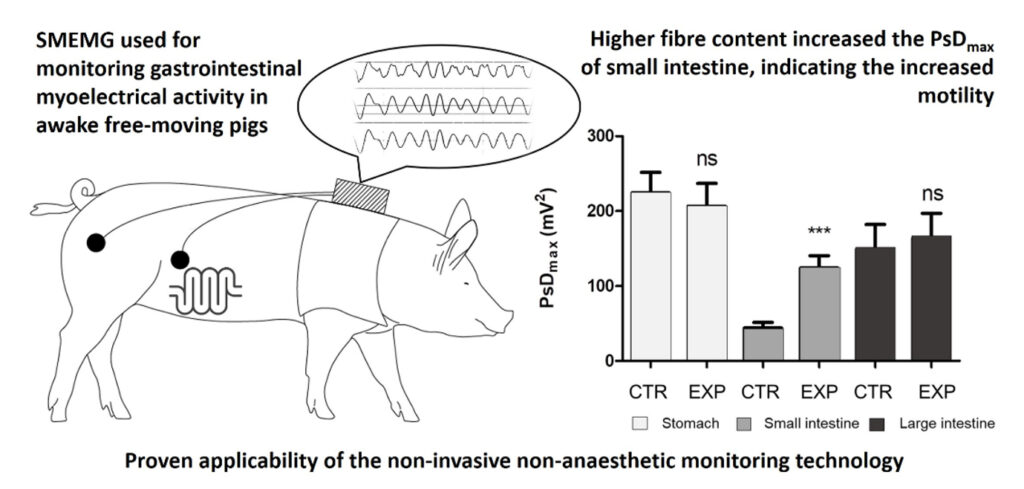Hungarian researchers were the first in the world to publish the results of digestive physiological studies based on electromyographic measurements performed on awake, growing pigs kept under farm conditions. The scientific publication presenting the results of the research conducted by the coworkers of ADEXGO Kft., Hungarian University of Agriculture and Life Sciences, MSB-MET Kft. and University of Szeged was published in PLoS ONE, a highly ranked multidisciplinary peer-reviewed scientific journal.
Non-invasive smooth muscle electromyography (SMEMG) as a novel monitoring technology of the gastrointestinal tract of awake, free-moving pigs—A pilot study
Katalin Nagy, Hedvig Fébel, George Bazar, György Grosz, Róbert Gáspár, Kálmán Ferenc Szűcs, Tamás Tóth
There are several mathematical models and measurements to determine the efficiency of the digestibility of different feedstuffs. However, there is lack of information regarding the direct methods or measurement techniques used to analyse the physical response of the different parts of the gastrointestinal tract (GIT) of growing pigs to different diets. Smooth muscle electromyography (SMEMG) is a non-invasive method for the measurement of gastrointestinal myoelectrical activity. In the present study, SMEMG methodology has been adapted from laboratory rats to pigs, and the effects of feedstuffs with control (CTR) or experimentally increased (EXP) amounts of fibre were investigated on gastrointestinal tract motility. Nine barrow pigs ((Danish Landrace × Danish Yorkshire) × Danish Duroc) were used (30 ± 3 kg), and their CTR and EXP feedstuffs contained 29 and 49 g/kg crude fibre (CF), respectively. Myoelectric activities of the stomach, ileum and caecum were detected in the awake pigs by a pair of electrodes. The recorded myoelectric signals were analysed with fast Fourier transformation (FFT), and the spectra were expressed in GIT section-specific cycles per minutes (cpm) values and the maximum power spectrum density (PsDmax). A significant increase (P < 0.001) was observed in the value of the PsDmax of the small intestine (20–25 cpm) as a consequence of the EXP diet. The PsDmax values of the stomach (3–5 cpm) and large intestine (1–3 cpm) did not show any significant change in pigs fed the EXP diet. As a direct and non-invasive method, SMEMG is suitable for the rapid evaluation of the effects of diets with different fibre contents on the GIT of non-anaesthetised, free-moving pigs.

Access the full paper free of charge on the website of the journal:
